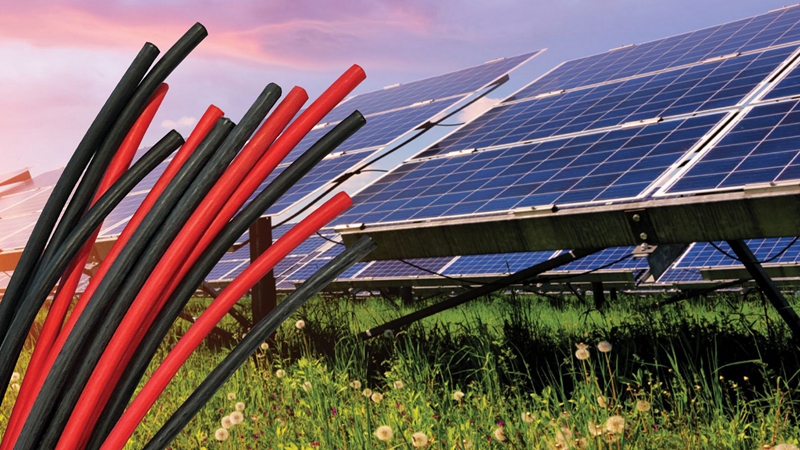As solar farm owners strive to enhance the performance and efficiency of their operations, DC wiring options cannot be ignored. Following the interpretation of IEC standards and taking into account such factors as safety, double-sided gain, cable carrying capacity, cable losses and voltage drop, plant owners can determine the appropriate cable to ensure safe and stable operation throughout the life cycle of the photovoltaic system.
The performance of solar modules in the field is greatly affected by environmental conditions. The short circuit current on the PV module data sheet is based on standard test conditions including irradiance of 1kw /m2, spectral air quality of 1.5, and cell temperature of 25 c. Data sheet current also does not take into account the back surface current of double-sided modules, so cloud enhancement and other factors; Temperature; Peak irradiance; The rear surface overirradiance driven by albedo significantly affects the actual short circuit current of photovoltaic modules.
Choosing cable options for PV projects, especially double-sided projects, involves considering many variables.
Select the right cable
Dc cables are the lifeblood of PV systems because they connect modules to the assembly box and inverter.
The plant owner must ensure that the size of the cable is carefully chosen according to the current and voltage of the photovoltaic system. Cables used to connect the DC portion of grid-connected PV systems also need to withstand potentially extreme environmental, voltage and current conditions. This includes the heating effect of current and solar gain, especially if installed near the module.
Here are some key considerations.
Settlement wiring design
In PV system design, short-term cost considerations can lead to poor equipment selection and lead to long-term safety and performance issues, including catastrophic consequences such as fire. The following aspects need to be carefully evaluated to meet national safety and quality standards:
Voltage drop limits: The losses of the solar PV cable must be limited, including the DC losses in the solar panel string and the AC losses in the inverter output. One way to limit these losses is to minimize the voltage drop in the cable. The DC voltage drop should generally be less than 1% and not more than 2%. High DC voltage drops also increase voltage dispersion of PV strings connected to the same maximum power point tracking (MPPT) system, resulting in higher mismatch losses.
Cable loss: To ensure energy output, it is recommended that the cable loss of the entire low-voltage cable (from module to transformer) not exceed 2%, ideally 1.5%.
Current-carrying capacity: Derating factors of the cable, such as cable laying method, temperature rise, laying distance, and the number of parallel cables, will reduce the current-carrying capacity of the cable.
Double-sided IEC standard
Standards are essential to ensure the reliability, safety and quality of photovoltaic systems, including wiring. Globally, there are several accepted standards for the use of DC cables. The most comprehensive set is the IEC standard.
IEC 62548 sets out design requirements for photovoltaic arrays, including DC array wiring, electrical protection devices, switches and grounding requirements. The latest draft of IEC 62548 specifies the current calculation method for double-sided modules. IEC 61215:2021 Outlines the definition and testing requirements for double-sided photovoltaic modules. The solar irradiance test conditions of double-sided components are introduced. BNPI(double-sided nameplate irradiance): The front of the PV module receives 1 kW/m2 solar irradiance, and the back receives 135 W/m2; BSI(Double-sided stress irradiance), where the PV module receives 1 kW/m2 solar irradiance at the front and 300 W/m2 at the back.
Overcurrent protection
Overcurrent protection device is used to prevent potential hazards caused by overload, short circuit, or ground fault. The most common overcurrent protection devices are circuit breakers and fuses.
The overcurrent protection device will cut the circuit if the reverse current exceeds the current protection value, so the forward and reverse current flowing through the DC cable will never be higher than the rated current of the device. The carrying capacity of the DC cable should be equal to the rated current of the overcurrent protection device.
Post time: Dec-22-2022




